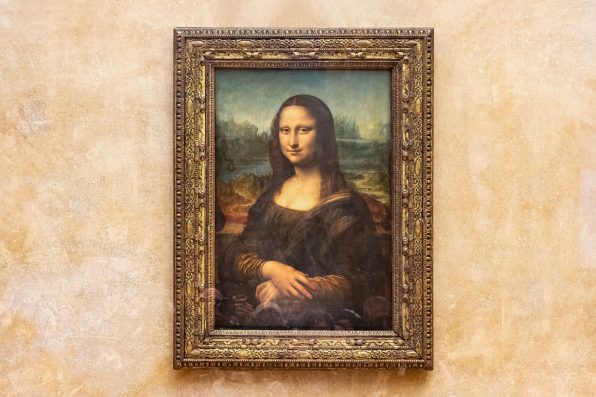A High-Tech Study Of The Mona Lisa Has Revealed A Drawing Hidden Beneath The Painting’s Surface

Over the course of 15 years, experts have conducted a high-tech study of Leonardo da Vinci’s Mona Lisa, revealing a hidden drawing beneath the surface of the painting. The drawing was discovered by scientist Pascal Cotte.
In 2004, Cotte began to uncover the painting’s secrets when the Louvre allowed him to take photographic scans of it.
At the time, he had invented a new “very high-resolution, highly sensitive multispectral camera.” Since then, he has been analyzing more than 1,650 images from his scan.
Cotte built the Lumiere Technology camera, which employs the layer amplification method to detect reflected light at 13 wavelengths.
The scanning method is based on infrared photography, which allows researchers to identify small details concealed underneath a painting.
Through a combination of near-infrared photography and infrared reflectography, Cotte’s camera enabled him to spot lines of charcoal in the lighter areas of the Mona Lisa.
“The optical system allows us to see very fine details and the high sensitivity allows a very high amplification of low signal,” he said. “The spolvero on the forehead and on the hand betrays a complete underdrawing.”
The technique of spolvero transfer, or pouncing, was used by the artist to transfer early sketches of a painting onto a canvas.
The artist would first prick holes along the outlines of the drawing. Then, the drawing is laid across a canvas and dusted with a fine powder of charcoal or clay through the holes. The dusting helped mark the outlines.

Alfredo – stock.adobe.com – illustrative purposes only
Cotte’s study of the Mona Lisa is the first time that a spolvero has been found in the masterpiece. This means that da Vinci’s early sketch of the painting might still be out there somewhere, waiting to be discovered.
The underlying drawing is of a vastly different silhouette than the final result. It had a slightly altered pose compared to the Mona Lisa we see today. In addition, charcoal underlines of a hairpin were created above the woman’s head.
At the time the painting was made, the woman’s hairstyle was not common in Florence. It suggests that the painting was not a portrait but a depiction of some sort of allegorical figure, like a goddess.
“People had to be dressed in certain ways to denote their profession and for nobility respecting the colors,” Cotte said.
“It is not possible for Mona Lisa to have hair like this; it was impossible of the time in the city of Florence.”
The sketch may have been used to make other copies of the painting, such as the version of the Mona Lisa in which the woman appears to be younger, owned by the Prado in Madrid.
It isn’t the first time underlying drawings were exposed from beneath da Vinci’s works. Previously, traces of spolvero were found in the St. Jerome in the Vatican and the Virgin of the Rocks in the National Gallery.
The study was published in the Journal of Cultural Heritage.
Sign up for Chip Chick’s newsletter and get stories like this delivered to your inbox.
More About:News